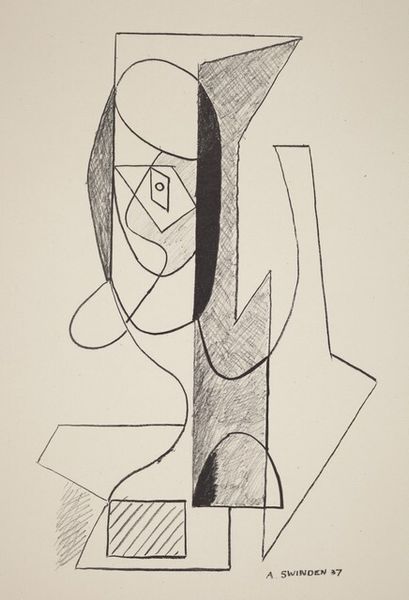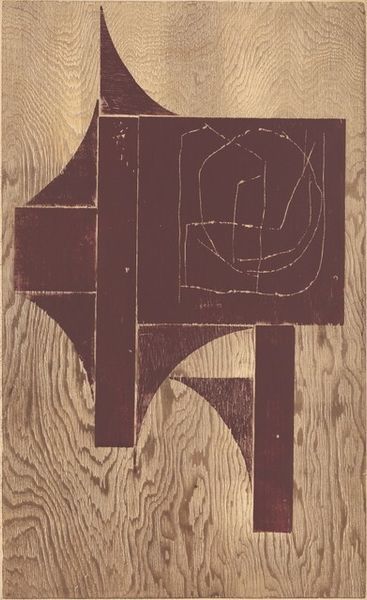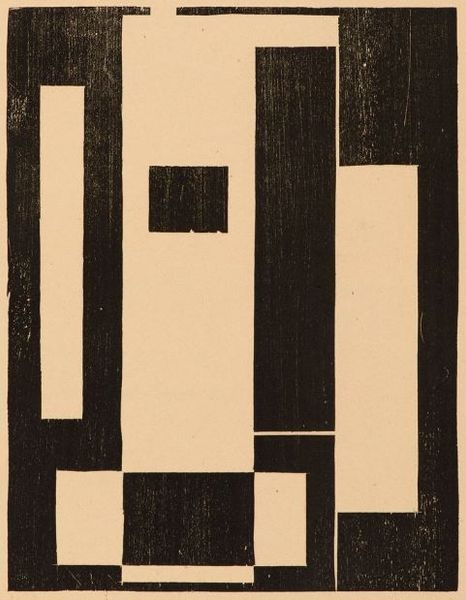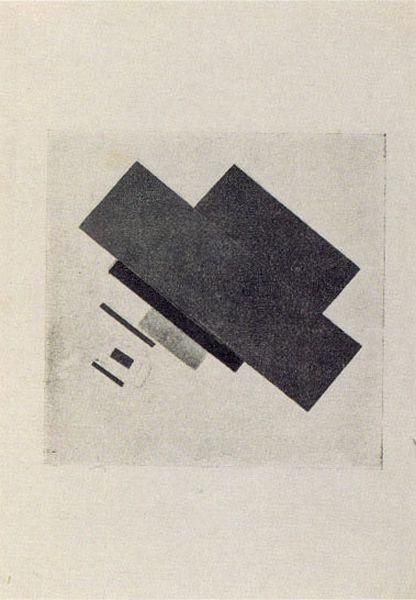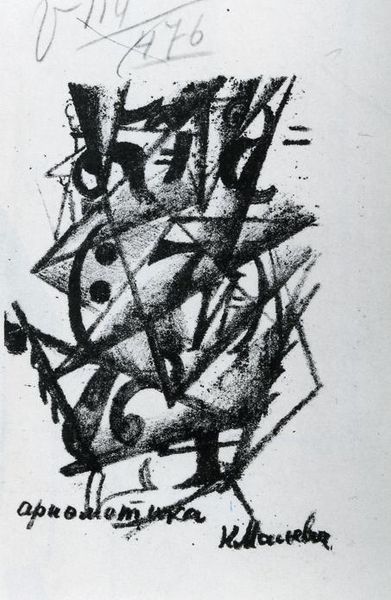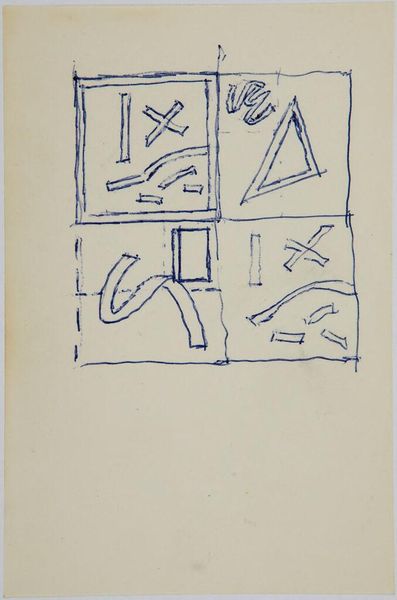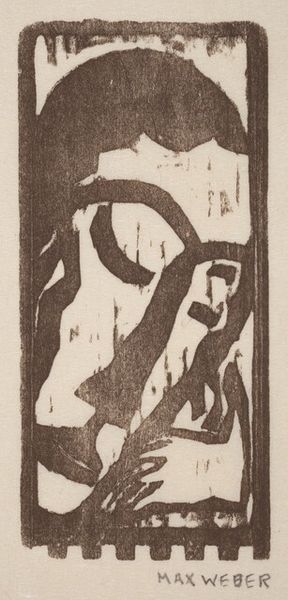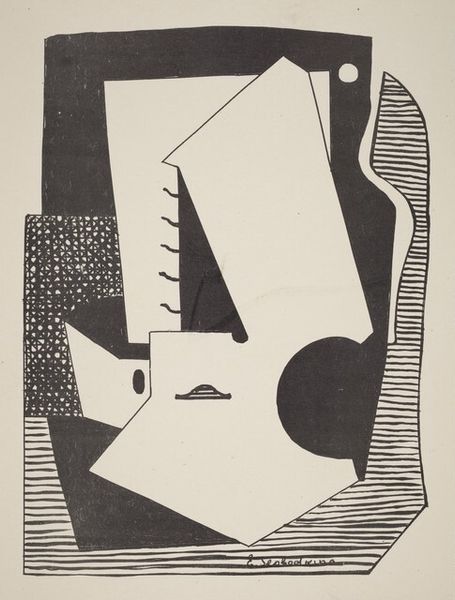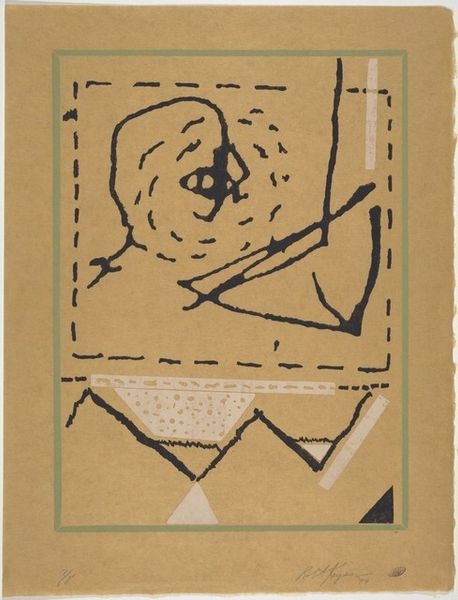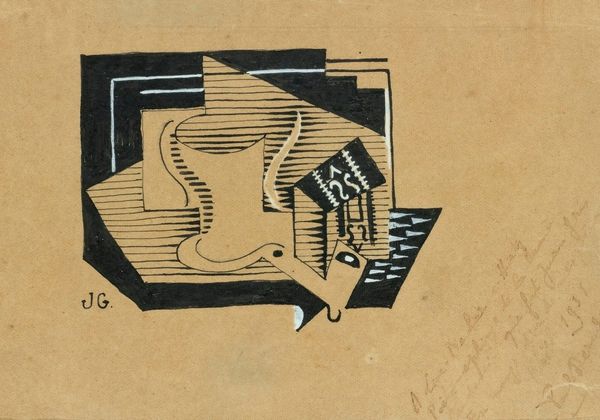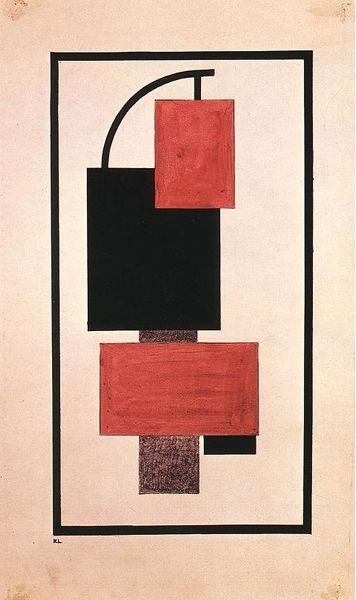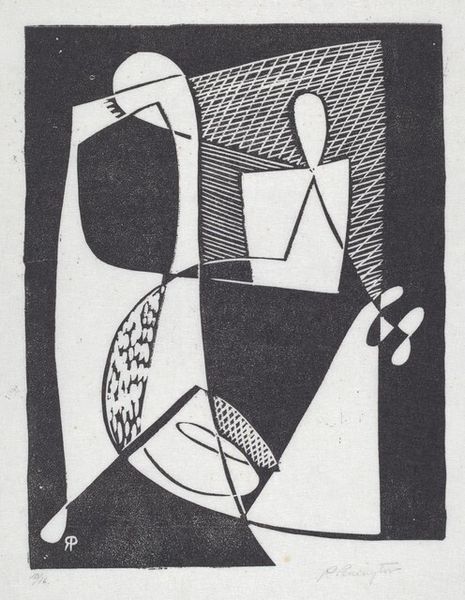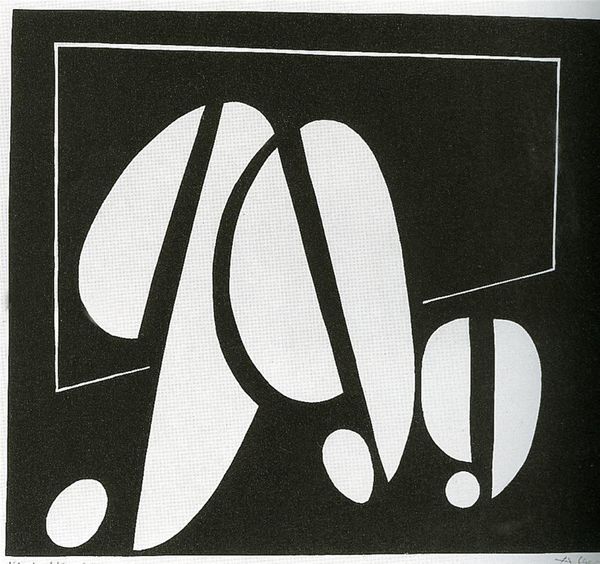
drawing, ink
#
drawing
#
cubism
#
form
#
ink
#
abstraction
#
line
#
modernism
Copyright: Pablo Picasso,Fair Use
Curator: This is Pablo Picasso's "Head in red background," an ink drawing dating from 1930. Editor: Immediately, I’m struck by its raw, almost primal simplicity. The rudimentary lines against that red...it's unsettling, but in a compelling way. Curator: It’s a fine example of Picasso's exploration of form and abstraction during this period. He was relentlessly deconstructing and reassembling the human figure, challenging conventional artistic representation. Consider the medium; it’s ink on paper, a readily available, almost quotidian choice that highlights the creative process itself. Editor: I see a distinct influence of Surrealism, moving beyond just formal abstraction. It speaks to subconscious anxieties about visibility and the representation of identity. The severe simplification also strikes me in light of the looming shadows of war and its brutal realities on human form. How do we quantify the pain and chaos he may have witnessed? Curator: Yes, it anticipates, even internalizes elements of Surrealism. What's interesting here, to me, is less the social commentary and more the active role of the artist. Ink is immediate. It demands decisiveness. It emphasizes Picasso's labor and decisions made at that moment of creation. We have a direct link to that artistic labor. Editor: It could easily reflect societal attitudes, such as anxieties about rapidly industrializing cities. The drawing becomes a battleground for visual dominance and patriarchal anxieties as a society adjusts to changing values and perspectives, almost as if the lines represent a negotiation for control. Curator: Interesting perspective. I find it important not to forget Picasso was also experimenting with printmaking techniques during this period. This simple drawing seems to almost emulate the clarity and directness of print. His relentless focus on materials allows us to understand the relationship between artistic process, consumption, and commodification. Editor: In that light, there's a palpable tension to it. He masterfully conveys both vulnerability and latent power by depicting a single head of distorted facial figures. It seems to resonate, if faintly, with political instability present during that time. Curator: Whether he meant to create such interpretations or not, this deconstructed head gives us today an object with which to continue asking challenging questions. Editor: Agreed, it serves as a potent symbol of a changing era, an identity fractured yet demanding to be seen.
Comments
No comments
Be the first to comment and join the conversation on the ultimate creative platform.
